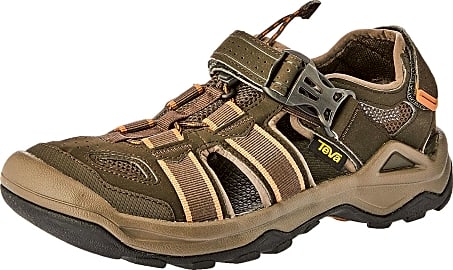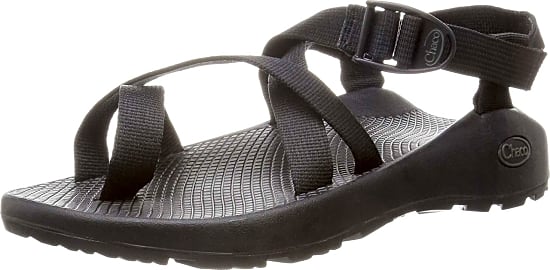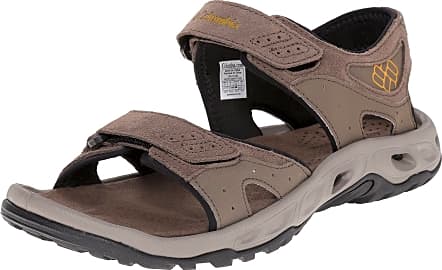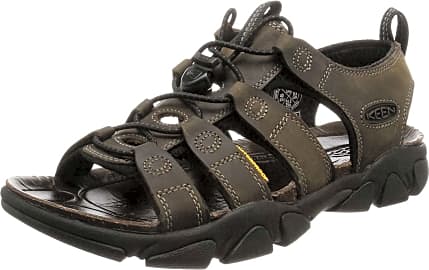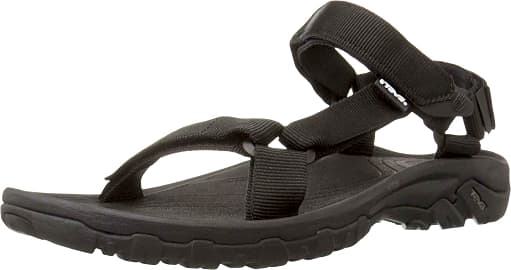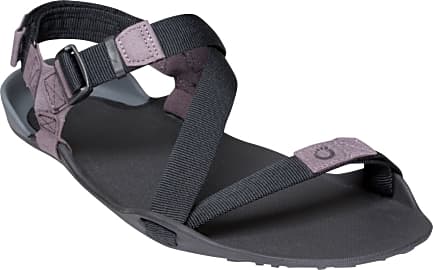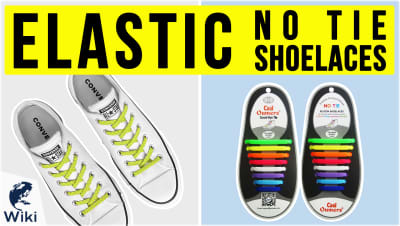The 10 Best Men's Hiking Sandals

This wiki has been updated 47 times since it was first published in April of 2015. When the temperature starts to heat up, a pair of these ergonomic men's hiking sandals will provide both the performance to go wherever you want and the comfort and breathability to keep going all day. Our selection includes casual models good for urban use through to more rugged and robust options that can stand up to the rigors of just about any terrain and environment. When users buy our independently chosen editorial choices, we may earn commissions to help fund the Wiki.
Editor's Notes
April 12, 2019:
The best men's hiking sandals should be durable, breathable, and above all, comfortable. We combed through over two dozen pairs while putting together this list, and judged each one on how well they balanced those criteria. Some models, of course, trade one feature in exchange for another: on one end of the spectrum is the Merrell All Out Blaze, which achieves the protectiveness of a shoe at the expense of ventilation and water-readiness, while on the other end is the Chaco Z/2 Classic, which gives you all the freedom and breathability of a traditional sandal. Overall, we thought the Keen Newport H2 best for most people, since it offers a bit of everything in equal proportion.
Why Wear Hiking Sandals Instead of Hiking Boots?
There's no mystery surrounding why people have traditionally worn boots whenever hiking.
There's no mystery surrounding why people have traditionally worn boots whenever hiking. Boots provide deep tread and resilient layers of support. A boot's design minimizes the risk of rolling over on one's ankle, or brushing low against poison ivy or jagged rocks. But the reality is that hiking boots can feel suffocating, and these boots may also put a hiker at a disadvantage, especially when traveling over several miles of flat terrain.
This is where the hiking sandal comes in. The majority of hiking sandals are designed to provide great traction, while also allowing your feet to breathe. Hiking sandals are obviously lighter than boots, which renders them preferable for any hiking that doesn't incorporate scaling rocks, or hopping crevices (AKA landing on one's feet). The majority of hiking sandals are also waterproof, which means they can be used for wading in rock-filled rivers or streams, as well.
On average, hiking sandals are less expensive than hiking boots. This makes an even bigger difference when you consider that a hiking sandal may actually provide you with more opportunities for use. Most hiking sandals appear sleek, which makes them perfect for wearing to any informal gatherings and/or outdoor parties. Additionally, a hiking sandal's open-air design effectively eliminates any risk of blistering from sweat, or acquiring any type of odor from not wearing socks on your feet.
When and Where to Strap On Hiking Sandals
Ultralight backpacking refers to a form of recreation that prioritizes cardiovascular enjoyment over jagged climbing and tight ledges. Ultralight enthusiasts are out to make the most of the open air, while taking in some spectacular views. Minimalism is the name of the game here, which explains why shorts are preferable to pants in the same way that hiking sandals are preferable to boots. You want to travel light and travel fast, while communing with the great outdoors.
Certain people enjoy driving in sandals, as they keep your feet cool.
Of course, backpacking isn't the only way to stay active while enjoying nature. Kayaking, whitewater rafting, and fly fishing are a lot of fun, as well. These activities are ideal for hiking sandals, almost all of which are not only waterproof, but designed to dry quickly, so you won't be swishing around.
Hiking sandals are open-toed, which means they can double as a set of footwear for the beach. These sandals are also comfortable enough that they can be worn to summer barbecues and other warm-weather outings. Whenever possible, hiking sandals should be worn as a substitute for flip-flops, which offer zero support, and can actually cause a great deal of pain throughout the back.
As a precaution, you may want to switch out of sandals if you're facing a long drive. Certain people enjoy driving in sandals, as they keep your feet cool. But depending on the vehicle (and the driver), you could encounter certain awkward situations in which the lip of the sandal gets caught underneath a pedal, forcing you to pull your foot back before you can properly brake or hit the gas.
A Brief History of The Hiking Sandal
People have been hiking, in one form or another, since the dawn of man. And given that sandals are the oldest-known form of footwear - with the most archaic pair dating back to at least 7500 BC - it's safe to say that the hiking sandal may have existed eons before people actually understood it as such.
They're made for long walks on open paths in warmer climates with the possibility of encountering a little bit of water in between.
All irony aside, most cultures gravitated toward wearing some form of hiking boot (as opposed to a hiking sandal) straight up until the early 2000s. The groundwork for this shift began during the 1970s, when a fitness craze took hold in Venice Beach, California. This craze eventually opened the door for countless sub-genres of physical conditioning. Around the turn of the 21st century, athletic apparel companies like Patagonia and The North Face shifted their attention toward footwear. Within a few years, a marketable interest in the hiking sandal was born.
By 2010, hiking wasn't only a popular pastime, it was spurred forth by sleeker gear and broader options. Hiking no longer meant that one had to rely on a granola diet, while growing long hair and behaving like an animal. Hiking become a social activity. People of all ages and skill levels got involved.
Today, hiking has branched out to include trail walking, rock climbing, mountain climbing, backpacking, trekking, rambling, scrambling, waterfalling, snowshoeing, and more. Hiking sandals remain resigned to the easy stuff. They're made for long walks on open paths in warmer climates with the possibility of encountering a little bit of water in between.



